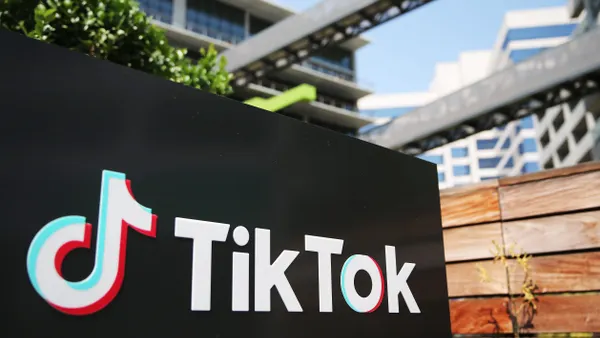Dive Brief:
- Many shoppers plotted out their Prime Day strategy ahead of the emerging holiday, according to research from A.T. Kearney emailed to Retail Dive. According to the study, 63% of Prime Day consumers planned four days out from the shopping day. Of newcomers to Amazon, 30% planned for Prime Day more than 30 days in advance, and 24% of existing Prime Members were preparing that far in advance.
- The A.T. Kearney study also looked at which products sold best on Amazon versus other retailers' sites on Prime Day, with electronics, toys and apparel taking some of the top spots, capturing 80%, 71% and 70%, respectively. Other retailers holding promotions on the same day competed best in categories such as grocery, cosmetics and beauty — although all were still outspent by Amazon.
- Finally, A.T. Kearney found that price and promotion were the top drivers for why consumers shopped Amazon on Prime Day, together making up 37% of all purchase motivations.
Dive Insight:
Despite website blips, Prime Day 2018 once again set records for traffic and sales. But behind those record sales, were millions of individual shopping decisions. Research from A.T. Kearney shows that the most useful takeaways from the day may not be about the retail prep, but rather the motivation that drove Prime Day shoppers' planning and decisions.
Amazon was responsible for 55% of all online orders during last year's Black Friday. And if Prime Day is a sign of what's to come, the giant marketplace will once again capture a majority of the digital sales this upcoming holiday season. In keeping with the mindset of winter holiday shoppers, 63% of Prime Day consumers planned about four days in advance of July 16 — similar to getting started on the Sunday prior to Black Friday. Even more staggering is that 30% of newcomers to Amazon planned for Prime Day 30 or more days in advance, and 24% of shoppers that were already Prime Members were prepping that far out.
Looking ahead, the motivations driving shoppers on Prime Day set the stage for what retailers can expect this holiday season. For instance, as has been the trend for the last few holiday seasons, shoppers will be planning on what gifts to buy well in advance of big promotion days such as Black Friday and Cyber Monday. And "deals" will once again be the operative word. Even as evidenced on Prime Day, promotions and price beat out loyalty for purchasing decisions.
Finally, Amazon could be set to take a giant chunk of the online shopping purchases during the holidays in 2018, especially in the popular gift categories of electronics, jewelry and apparel if shopper inclinations from July hold through the holiday season.
"The strong economy suggests that this upcoming holiday season, the demand is going to be there. So the issue is one of readiness," Greg Portell, lead partner in the global consumer and retail practice of A.T. Kearney, a strategy and management consulting firm, said in an email to Retail Dive. "Get the product right and make sure you execute broadly. From a labor standpoint, this means having employees in the warehouse or on the retail floor to sell that product. The infrastructure has to be in place."
Portell also noted that physical stores can compete with digital giants like Amazon this upcoming holiday season, as long as they offer more than just a lower price.
"When it's purely price driven, it's very hard to compete with the large digital retailers on price or efficiency. Where you see retailers do well in the holiday is the experience and merchandising part — 'help me understand what I'm buying' — that's a traditional brick-and-mortar retailers' best defense against price," Portell said.













